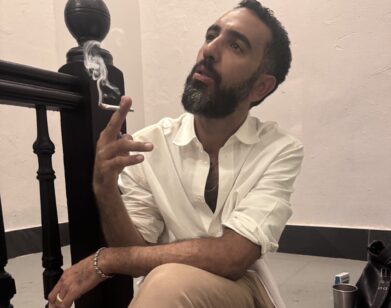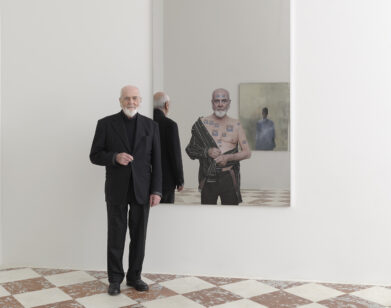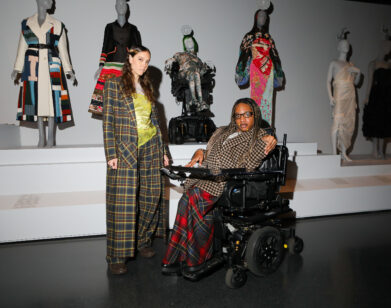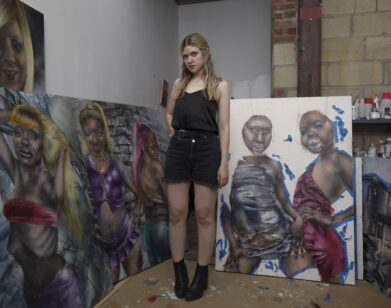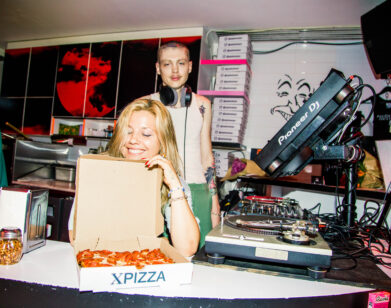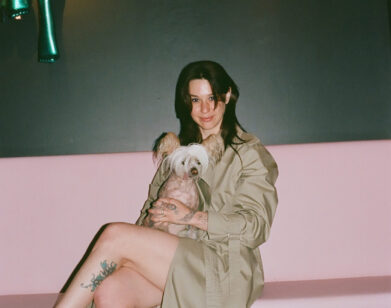SYMBIOSIS
Allie Furlotti and Sol Hashemi on Community Building and Crystal Brews
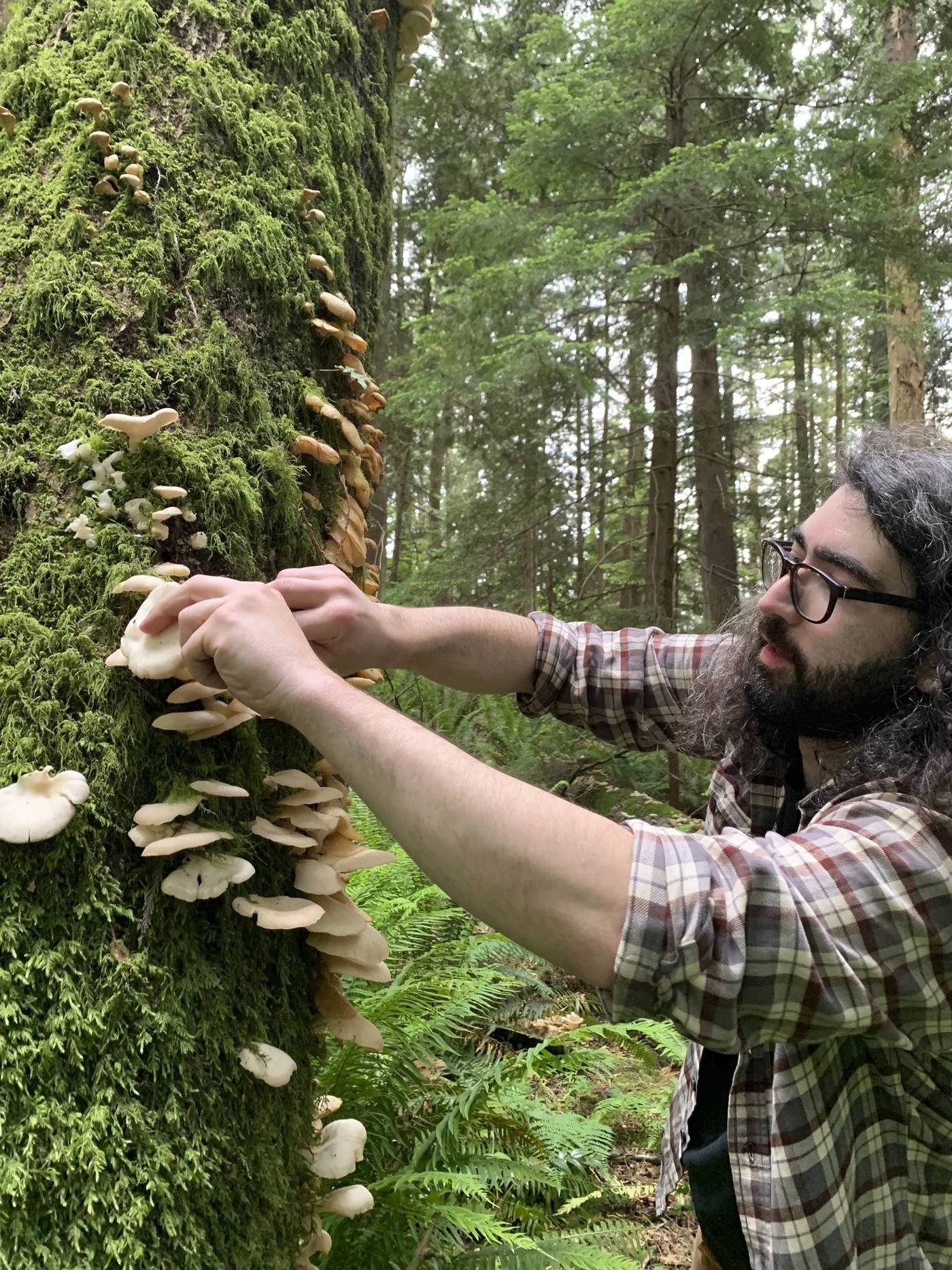
Photo by Rosamunde Bordo. Image courtesy of ILY2.
During Miami art week, Allie Furlotti, the founder of experimental Portland gallery ILY2, hosted an unconventional dinner celebrating NADA’s 20th Anniversary. Revolving around themes of alchemy and fermentation, the immersive culinary experience mirrored the work of Sol Hashemi, ILY2’s featured artist at the fair. Inspired by the symbiotic connections between roots and fungi, Hashemi brought home brew, sculpture, and photographs from Vancouver, B.C. to Florida—flipping the idea of a fair booth on it’s head by offering tastings of cornelian cherry and selenite-infused elixirs to passerby. But this wasn’t unusual for ILY2, a philanthropically-minded gallery that grew out of a residency created for artists during COVID lockdowns (they also offer a free therapy program for Portland residents). To teach us more about their all-encompassing project, Furlotti and Hashemi got on the phone a few days after the fair to dish on crystals, community building, and conquering their first-ever NADA show.
———
SOL HASHEMI: How are you doing?
ALLIE FURLOTTI: I’m good. I’m surrounded by three dogs that I’m obsessed with and I’m like, “How am I going to focus?”
HASHEMI: [Laughs]
FURLOTTI: Do you know how last night I was like, “I’m going to have a brew and it’s going to come out tomorrow in our conversation.” I had a dream that you and I were in Thailand foraging for things to make fresh Thai teas with.
HASHEMI: Wow. What were some of the items?
FURLOTTI: One of them was this really rare Thai chili pepper, I don’t even know if it exists in the world. We were in the jungle and we had people that were showing us around. They were pointing up into the tree and they were like, “If you go up there, it’s the perfect time to pick it.” And I remember looking at your face and you were like, “I see one.”
HASHEMI: Very cool.
FURLOTTI: I know. Dream brews. So how are you feeling after Miami?
HASHEMI: I’m just recovering, but I’m feeling really good about it. The party was great and the experience was awesome. I met a lot of cool people and shared home brews with a ton of people.
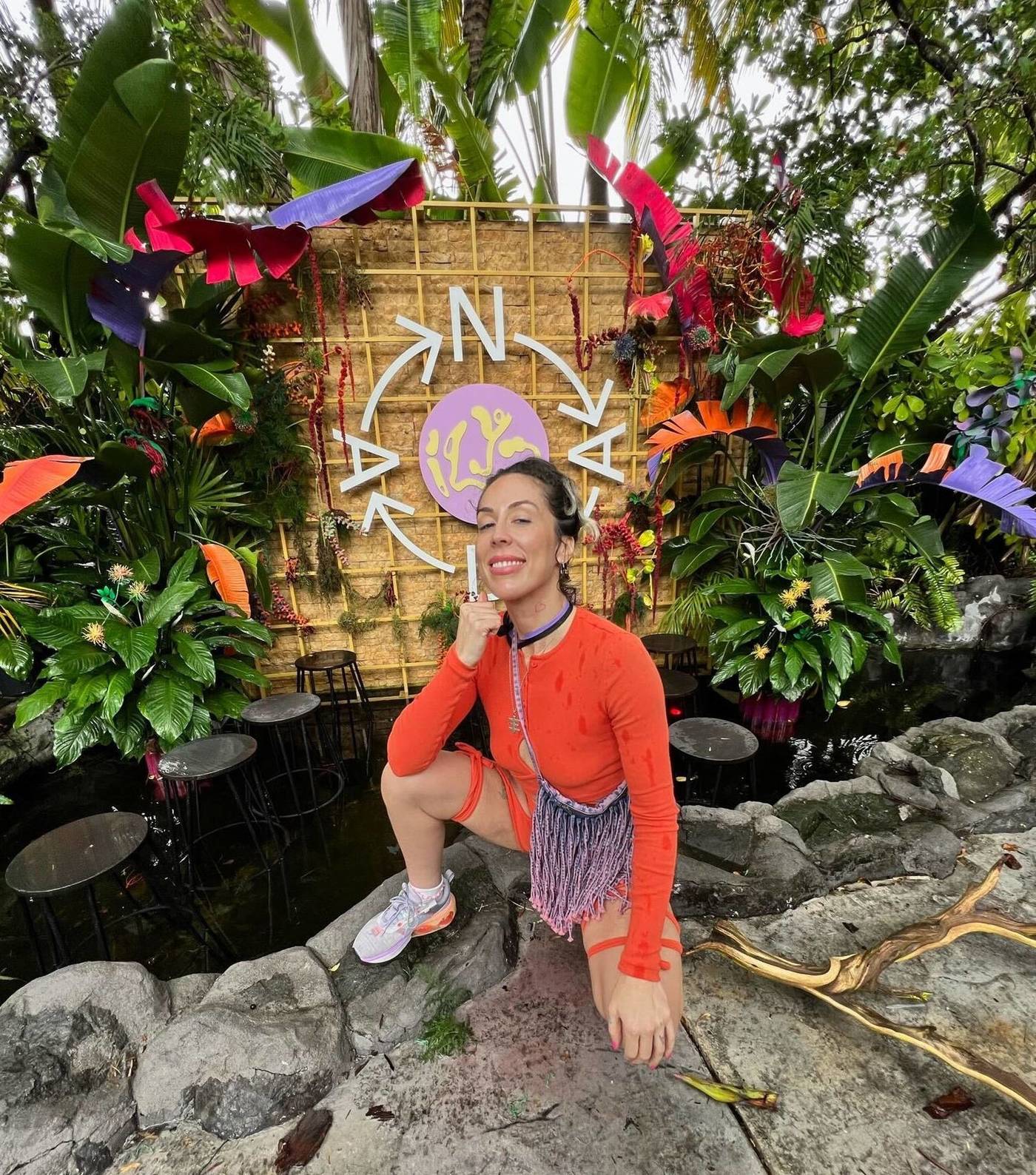
Image courtesy of ILY2.
FURLOTTI: What did you and Rosamunde [Hashemi’s partner] do to get ready for Miami?
HASHEMI: We watched Some Like It Hot. I’d never seen it before and it really was fitting both being set in prohibition-era Chicago and including a trip to Miami. There were some parallels in my life at that point.
FURLOTTI: I love the idea that you were watching a movie that’s about a party train full of alcohol to Miami because we were trying to get the beer from Vancouver to Miami and it was the same kind of tomfoolery, getting you across the border.
HASHEMI: [Laughs] It was all legal in our case, but the laws around alcohol that come from that era made it difficult, that’s for sure.
FURLOTTI: So, I am really interested in your process of foraging. That’s what really drew me to your work. I personally come from a psychological, intuitive place where I feel like I’m internally foraging and fermenting my facets. I want to know what foraging means to you, and what your process is like.
HASHEMI: Sure. I come from a background of photography, and growing up I wanted to be a nature photographer. And so, with foraging, I like to think of it as a chance to become acquainted and more familiar with the area I live in. I wanted to work with a lot of plants that often aren’t available commercially or aren’t traditionally used in brewing. For example, working with the bark from a tree that had fallen. First I was going to use the wood to make a sculpture, but then over time I learned that the tree’s bark has certain medicinal properties—that red alder bark tea is a beverage that exists. And so, I incorporated it into a beer for aches and pains.
FURLOTTI: Right.
HASHEMI: I was out doing a residency on Salt Spring Island with Germaine Koh. She has these micro studios that she set up for her program, the Hemlock Micro Studio Residency. She invited me out to work with her apple trees and make cider. The area had a ton of yaro, which is a flower that has medicinal properties and a nice flavor, so I incorporated it into the cider to give it some bitterness.
FURLOTTI: I just was reflecting as you were talking about how amazing it is to just hold an object with you in your space and evolve with it. You get to know the red alder bark, you learn about it just like it learns about you. There’s some kind of symbiosis, there’s an energy there. And I love thinking about how you imbue these brews with these medicinal plants and this intention and then the crystals. It reminds me a lot of my process, which is completely different on the surface but really at its root is just about watching things grow and change and seeing what happens.

Photo by Martin Katzoff.
HASHEMI: Absolutely. So you’ve been hosting these residencies in Portland for two years, correct?
FURLOTTI: Yeah.
HASHEMI: What led you to starting that program and ILY2?
FURLOTTI: Just I felt like there was this creative drought during COVID and I wanted to create a place of abundance. I had it set up like a fishbowl with speakers outside so people could walk by and see the art as an inspiration when no one could be indoors together. I just wanted to foster a creative spirit. And then I called it ILY2 because I wanted to give each artist the opportunity to just go in and do whatever they wanted. I didn’t know that I was actually giving love to myself and softening myself. I thought I was just giving to other people. Two years later I’ve started the gallery, the therapy program, the mall with the residency, and now NADA.
HASHEMI: Amazing.
FURLOTTI: The art process for me is the psychological transformation of integrating my negative animus so that I don’t come out into the world like a battle axe, I come out in the world like the positive feminine. I feel like the whole world needs that softening.
HASHEMI: So much of your practice is about exploring how a gallery can be run differently to create new possibilities in the world—like the therapeutic conversation hotline that you run. And you’re doing it yourself, it’s just so amazing hearing about that.
FURLOTTI: Thank you.
HASHEMI: It’s all about possibility. And I’m really interested in thinking about nature as a possibility. My practice has some deep ties to the Pacific Northwest, it’s where I grew up. I lived in New York a little bit but I’m back in the region. I really enjoy being outside of an art center, being able to think with the land and explore.
FURLOTTI: I also want to talk about how you are really interested in objects holding memories and feelings and the abacus of the heart. That was a sentence that you said that just took me into this lovely poetry land.
HASHEMI: Yeah, so with this project I’ve explored a lot of different cultural niches. One area that I’ve been interested in is crystals, whether it’s their scientific or metaphysical use.
FURLOTTI: I was thinking about your photographic process, don’t cameras have some kind of crystal?
HASHEMI: Well, there’s often a silicone crystal that’s the basis of the computer chip used in things like photo sensors. We just carry around these minerals. And so, I was thinking about the minerals that we actually encounter and use constantly, and also the different metaphysical properties of crystals. I actually made a brew that has selenite in it. It’s a crystal known for clearing negative energy. Selenite is a crystalline form of gypsum, and that’s a mineral that’s in water around the world. Some areas have more gypsum than others, and some beer styles have developed because of large quantities of gypsum in the water, like in the UK.
FURLOTTI: Right.
HASHEMI: So through following these threads, I realized that I could work with selenite in its crystalline form. It both impacts the astringency and flavor, and how the hops come through in the beer, but also works with the metaphysical side at the same time.
FURLOTTI: I love the metaphor of how relationality, just two people in a conversation, is a form of crystallization. It’s one thing attracting another thing that then grows around it. I think about that in my therapy process. I think about that when I’m throwing a party like that big NADA dinner. I just feel like it’s really foundational.
HASHEMI: Yeah.
FURLOTTI: I think that’s a good place to leave it, but I wanted to wrap with the concept that ILY2 is an ever-evolving community. We were talking last night about how we and the rest of the ILY2 team have a relationship, and how there’s going to be this web that keeps growing. I already have people I want to introduce you to. You know some friends of mine. There’s this contagious way of communicating and relating that I want for the world instead of withholding information and withholding relationships, which I feel like is more common. People are egotistical and they want the win for themselves, whereas I want the win for other people so that they can build the thing that the world needs to see. Your work has drawn me in so much because it is a metaphor for that kind of positive growth. I just wanted to say that.
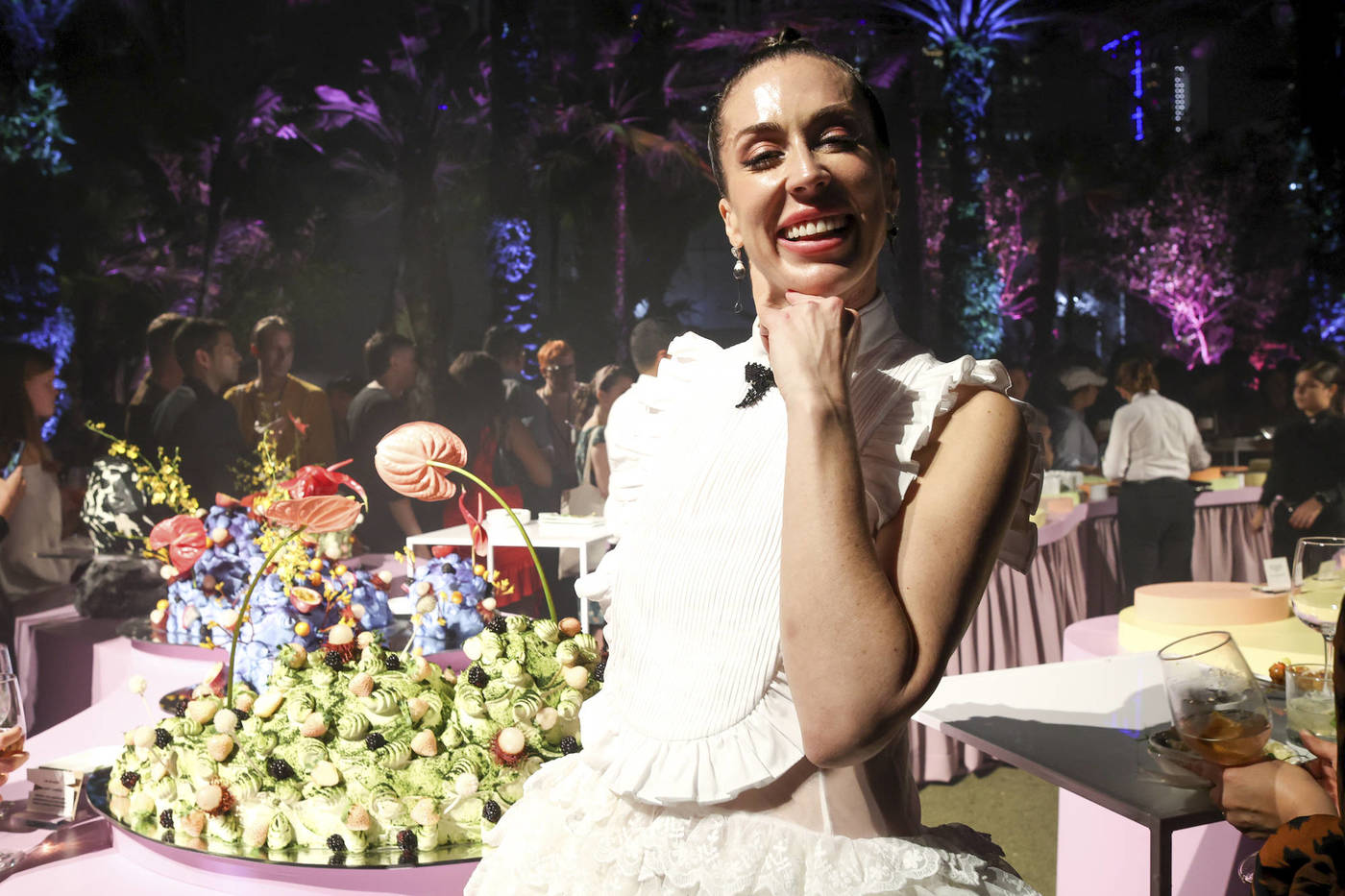
Yvonne Tnt/BFA.com

